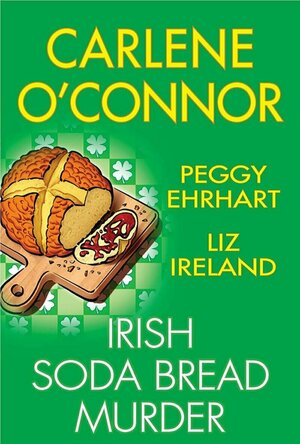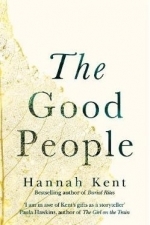
The Irish Times News
News
App
Stay connected with The Irish Times app. The app brings you breaking news from Ireland and around...

Sygic Europe & Russia: GPS Navigation, Maps
Navigation and Travel
App
The World’s Most Advanced Navigation app, trusted by 125 million drivers. Sygic: GPS Navigation,...

Sky Sports
Sports and News
App
Don’t miss a worldy, wicket, fastest lap or crunching tackle thanks to the knockout Sky Sports...
Lyndsey Gollogly (2893 KP) rated The Weight of Him in Books
Mar 6, 2022
Book
The Weight of Him
By Ethel Rohan
⭐️⭐️⭐️⭐️⭐️
In The Weight of Him Billy Brennan undergoes an unforgettable journey in a starting attempt to resurrect his family and reignite hearts, his own most of all.
At four hundred pounds, Billy can always count on food. From his earliest memories, he has loved food's colors, textures and tastes. The way flavors go off in his mouth. How food keeps his mind still and his bad feelings quiet. Food has always made everything better, until the day Billy's beloved son Michael takes his own life.
Billy determines to make a difference in Michael's memory and undertakes a public weight-loss campaign, to raise money for suicide prevention--his first step in an ambitious plan to save himself, and to save others. However, Billy's dramatic crusade appalls his family, who want to simply try to go on, quietly, privately.
Despite his crushing detractors, Billy gains welcome allies: his community-at-large; a co-worker who lost his father to suicide; a filmmaker with his own dubious agenda; and a secret, miniature kingdom that Billy populates with the sub-quality dolls and soldiers he saves from disposal at the toy factory where he works. But it is only if Billy can confront the truth of the suffering and brokenness within and around him that he and others will be able to realize the recovery they need.
Told against the backdrop of rural, contemporary Ireland, The Weight of Him is a big-hearted novel about loss and reliance that moves from tragedy to recrimination to what can be achieved when we take the stand of our lives.
This was not a book I’d normally pick up and it came to me in a box subscription. I’m so glad it did it was so beautifully written and dealt with a some important issues suicide, grief , depression, weight loss and lots more. I loved it I didn’t put it down it had such a sad underlying story. Definitely glad it landed on my tbr.
Merissa (13668 KP) rated Down to the Sea (Mystic Beach, #1.5) by Aislinn Archer in Books
Jun 17, 2022 (Updated Jun 19, 2023)
Events that happened in Once Upon a Dream from Hunter's perspective, we now see from Brighid or Aedan's. This definitely helped fill the gaps and you see the reasons now for things Brighid did or said.
Aedan has his own love who hasn't 'woken up' yet and he and Brighid decide to pass the time with each other. He is a priest for a Manx Sea God - Manannán mac Lir. This means he has his own insights but he certainly doesn't see everything.
Apart from Brighid's visions, there isn't much paranormal here yet, although I'm sure that's coming in future books. I am loving this story and how the characters change and grow throughout the story.
One thing I have to say - and I know I will be in the minority here - but I got bored with the sex scenes between Aedan and Brighid. It says in the blurb the steam factors are high, and they are. It's just... I discovered I wanted more of the connection, the mysticism, between the two of them, rather than the sex. I found myself skipping over the sex scenes (unlike me) to get the visions or OoB experiences at the end. I loved it when the author changed it slightly near the end so we knew what they were doing but didn't need everything laid out.
As I say, this is my opinion, and it certainly didn't stop me from enjoying the rest of the story! I am now waiting (im)patiently for the continuation of Hunter and Brighid's story, content with waiting for Aedan's simply because I know it's coming.
If you love Ireland and the Irish Gods, I definitely recommend this book and series.
** same worded review will appear elsewhere **
* A copy of this book was provided to me with no requirements for a review. I voluntarily read this book; the comments here are my honest opinion. *
Merissa
Archaeolibrarian - I Dig Good Books!
Jun 12, 2022

Irish Soda Bread Murder
Carlene O'Connor, Liz Ireland and Peggy Ehrhart
Book
It’s almost time for the delicious warmth of Irish soda bread, but be careful where you...
Haley Mathiot (9 KP) rated Uncertain Magic in Books
Apr 27, 2018
Genre: Adult Historical romance
ISBN: 9781402237027
Published: May 4th 2010 by Sourcebooks Casablanca (first published March 2nd 1987)
Rating: 5
Roddy has a "gift"—or as she thinks of it, a curse—that allows her to hear the mind and feel the emotions of every human and animal on earth. Because of this, and her family history, she knows she will never be married, never have her own family… because what man wants every single thought and emotion on display for his wife? Past failed marriages in the family have shown her that her happiness is a hopeless cause… until she meets one man whom she does not have access to his thoughts and feelings. So Roddy takes things into her own hands. She realizes a little too late what kind of man she's gotten interested in her: Lord Iveragh. The Devil Earl of Ireland.
She carries out her plan, however, and he seems to like her enough to marry her. But The Devil Earl is hiding things from her… and possibly himself. Roddy finds that she can help him… but it will require more than she may be willing to give. If she doesn't, though, she will loose him forever… and maybe loose herself, too.
I loved Uncertain Magic. I wasn't sure what to expect when I started reading it. It was certainly a romance, and a very good one at that. But it was so much more than a romance novel: It was a clever blend of romance, adventure, historical events, family secrets, and Gaelic magic. The plot incorporated a rebellion in Ireland, smuggling, murder, and magic. There were horse races, escaping soldiers, and midnight balls with the dead.
The relationship between Roddy and Faelan (Lord Iveragh) started off a little random: a chance meeting, Roddy saving his horse from a heart attack, her pretending to be a stable boy and bragging on his employer (herself, of course) and Faelan seeing through it and embarrassing her. As it continued, I was a little surprised at the speed it progressed: They were married by chapter five. But them being married though the book was such an important aspect, that I understood it later. Of course, no marriage is perfect, and many romances are victims of happyland syndrome, where their relationship is so perfect that it's almost Holy.
Not this one.
There were misunderstandings, tears, heartbreak, scandals, possible affairs, redemption, and healing. And plenty of love-making.
With that said: the characters were great. Roddy was sweet and soft, but she had her spunk and I liked her immediately (especially when she took out a rude stableboy with a single kick). Faelan was, as his nickname describes him, a devil—but he was good that way. He was a little obnoxious, he had his sarcastic moments, and he certainly had his pride. He's the kind of dark secretive hero that everyone looks for… but with a touch of madness—or maybe magic—to make him even more mysterious. I love Roddy, I adore Faelan, and his mother (let's just say she never. shuts. up.) makes me laugh… the characters in this story are gems.
Just as I didn't expect the twisting exciting plot, I didn't expect the writing to be so good. It felt great to read, and the dialogue was easy to speak and felt natural. It flowed well, and was descriptive and lyrical. I liked the way Kinsale described Roddy experiencing everyone else's thoughts and emotions, and I liked the way she didn't over-describe everything—every little facial expression, every little movement—leaving out some for your imagination, but added enough description to allow you to see everything.
There were disappearing faeries and blind men who could see (try figuring that one out!) and missing chunks of time… all tied up beautifully at the end. Although it was, at first, a little confusing to figure out what had just happened on the last few pages, I loved the ending. There wasn't quite enough closure, but it didn't need to be closed: it was more like an opening for their new life together. After reading it, you know what will happen… so it doesn't need to be said.
This is probably one of my favorite books I've read this year, and it demands a re-read in the future.
Content/Recommendation: Some sex, mild language. Ages 18+
Review copyright Haley Mathiot 2010. Review copy supplied by publisher.
Zuky the BookBum (15 KP) rated The Good People in Books
Mar 15, 2018
This is my first Hannah Kent novel, and I absolutely loved it! As far as Historical Fiction goes, its not the best Ive ever read, but I always have a soft spot for it, so it always gets a good rating from me!
I really enjoyed this story, even though it honestly doesnt feel like an awful lots happens until right at the end. Kent is so good at transporting you into her story that you feel as though you are living with the characters.
This novel is set in Ireland in 1825, filled with small village life, religion, and superstitions. Kent is really good at weaving a beautiful story that sucks you right into the early 1800s. Youre instantly immersed in the villagers lives, and especially Noras misfortune and troubles.
Characters in this one are stunningly done. There are three main characters we follow closely throughout, Nora, Mary, and Nance. Its amazing how easy it was to get to know them, and how easily you can feel so many different emotions with and for them.
In terms of story, I did think this one was going to be that little bit more fast paced and have more elements of a mystery, but even without those two things, this is still a terrific read! I do really love a slow paced historical fiction, even ones like these where it doesnt feel like much is actually happening in the book. This is definitely more of a character study kind of book, rather than plot driven book.
Overall, I really liked this one! Im sorry the review is short but I honestly dont really know how to review this other than saying its beautiful, fantastically well written, and pretty emotional (I cried at the end)! Definitely pick this up if youre looking for a slow drama.
<i>Thanks to Netgalley and Little, Brown and Company for sending me a copy of this book in exchange for an honest review.</I>
LilyLovesIndie (123 KP) rated Red Sky in Morning in Books
Nov 5, 2018
I received this book through NetGalley in return for an honest review, and that I am very grateful for this opportunity to broaden my reading experience. This is a very different book to what I would usually read, with a different style of writing and plot development. Nevertheless, I did find it somewhat enjoyable, even if it was lacking in a couple of places.
The story follows the harsh life of Coll Coyle, a young Irish man struggling to keep his home for his family from a vile landlord. It seems things can only get worse as the saga progresses, with John Faller, a formidable gentleman, following him all the way around the world. Although he meets a good friend, his heart never truly leaves the loved ones left behind in Ireland.
Initially, this story is rather tough to get into, and that isn't something that changes much over the course of the book. Written in a strong Irish brogue, at times it can be quite difficult to read, however this becomes easier as you go further through the book. It does help you feel more immersed in the story though as it strangely flows quite naturally when you're reading.
The plot is something that, if I'm totally honest, needs a little work. It's just rather plodding and slow at times, and even after finishing it, I don't feel like the story really went anywhere and was never aiming for a conclusion. In addition, at times it was very depressing to read, and I had to put it down in favour of something a little more light-hearted.
All that as it was, there is one major redeeming feature in this book that had me reading to the end. The imagery is truly exquisite - Lynch really does have great skill at weaving the description through the story. This was a delight to read as the images just appeared with minimal effort from myself straight into my head.
Overall, I enjoyed this book, but it probably wouldn't be one I'd read over and over again. The description is by far it's greatest feature but it is, on the whole, something I'm glad I've read.

Jazzy World Tour - Learn Music
Education, Music and Stickers
App
• Winner of a Parents' Choice Award • Washington Post - Best Kids Apps for Road Trips Join our...


